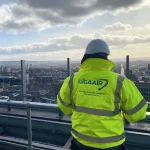UK Government Incorrectly Claims 97% Superfast Broadband Cover UPDATE
The Government’s Minister for Digital and the Creative Industries, Margot James MP, has wrongfully claimed that its Building Digital UK programme has now helped to push fixed “superfast broadband” (24Mbps+) network coverage to 97% of UK premises (the expectation is that this could reach around 98% by the end of 2020).
The announcement came a little sooner than we expected and even the official BDUK programme hadn’t expected the 97% figure to be hit until around March 2020 (see below), which seemed like a reasonable prediction to us. As such we find ourselves wondering whether or not the minister has rounded-up her figures, although official Government stats have often tended to be ahead of other independently sourced coverage data but not usually by this much.

The announcement was quietly made as part of a brief commons chamber debate last week, which focused upon the issue of achieving superfast broadband coverage in rural areas. The only other interesting point to come out of this debate was the confirmation that the Scottish Government is now set to award contracts for their much delayed Reaching 100% (R100) broadband programme this “autumn“.
Advertisement
Otherwise Margot James largely used the opportunity to highlight the Government’s new £200m Rural Gigabit Connectivity (RGC) programme, which among other things has begun offering vouchers (£3,500 for small businesses and up to £1,500 for residents) to help homes and businesses in rural areas gain access to Gigabit capable broadband connections (ideally “full fibre” FTTP services).
One catch here is that the RGC focuses itself upon the next generation of connectivity (i.e. beyond superfast), which means that it can also be harnessed by a much wider selection of rural areas (i.e. not only those in the final 3% of premises where superfast speeds have yet to reach).
We should point out that various local authorities, as well as the Welsh Government, also have their own complementary voucher schemes. On top of that the Better Broadband Subsidy Scheme (BBSS) is still going and offers smaller vouchers worth up to £350 to help area homes where only sub-2Mbps speeds are currently possible (here). Often vouchers like this can be aggregated by communities in order to help co-fund better upgrades.
Margot James MP said:
“The Government’s superfast broadband programme has met its target and is now providing superfast coverage to 97% of premises, including 94.8% of premises in my hon. Friend’s constituency [this is a reply to Daniel Kawczynski, MP for Shrewsbury and Atcham].
In addition, we have just launched the rural gigabit connectivity programme, with £200 million of funding, to begin to deliver even faster, gigabit speeds to the most remote and rural parts of the UK.”
Assuming the remaining elements of the Superfast Programme do reach 98% coverage by around the end of 2020 then it’s largely expected that the final 2% of premises will be tackled by the new Universal Service Obligation (USO), which from March 2020 will make it possible for those in slow speed areas to request a broadband speed of at least 10Mbps (many will get much faster than this) from either BT (Openreach) or KCOM (Hull only).
Advertisement
Currently around 620,000 premises fall into USO bracket (England 434K premises, N.Ireland 39.5K, Scotland 99K and Wales 47K) but the figure continues to shrink as fixed “superfast” coverage grows. BT has predicted that 4G based wireless broadband services could substantially reduce the USO footprint by providing coverage to 450,000 of the estimated c.600K eligible premises in 2020, although some FTTC/P services will also be deployed.
At this point it’s probably worth comparing the Government’s claimed 97% figure to the latest independent H1 2019 network coverage model from Thinkbroadband, which tends to be more cautious in its figures than the Government’s official data (partly because they take a bit longer to track new areas once they’ve gone live). The figures are estimates but they’re a handy alternative to official data and Ofcom.
Fixed Broadband Network Availability 2019 H1
| Area | % Superfast 24Mbps+ | % Ultrafast 100Mbps+ | % Full Fibre FTTP/H | % Under 10Mbps USO |
| London | 97.3% (97.1%) | 74.7% (73.9%) | 11.31% (9.00%) | 2.2% (2.4%) |
| England | 96.6% (96.3%) | 60.2% (58.9%) | 7.95% (5.62%) | 2.4% (2.7%) |
| UK | 96.1% (95.8%) | 57.5% (56.1%) | 8.13% (5.47%) | 2.7% (3%) |
| Wales | 95.2% (95%) | 37% (36%) | 8.59% (6.12%) | 3.5% (3.6%) |
| Scotland | 94% (93.7%) | 47.7% (46%) | 5.05% (2.8%) | 4.7% (5%) |
| Northern Ireland | 89.5% (88.5%) | 45.5% (39.3%) | 23.16% (8.67%) | 7.1% (7.6%) |
NOTE 1: Nearly all of the “ultrafast” (100Mbps+) coverage is coming from Virgin Media’s cable network, although Openreach, Hyperoptic, Gigaclear, Cityfibre, TrueSpeed and others all have big “full fibre” (FTTP/H) expansion ambitions for related services (details). The 330Mbps capable G.fast roll-out to 5.7 million UK premises by the end of 2020 will also help.
NOTE 2: Recent BDUK contracts have adopted the EU and Ofcom’s higher download speed target of 30Mbps+ for “superfast” connectivity, which on average tends to trail around 0.2-0.4% points behind the 24Mbps+ figures above (we don’t list this due to the limited difference).
NOTE 3: It’s very important to remember that Government / political targets like 95% or 98% reflect a national average, which can of course be better or worse for some regions (e.g. a few may achieve universal coverage, while others could be well below that).
Over the longer term the Government has also committed to achieve “nationwide” coverage of ultrafast “full fibre” (FTTP) broadband networks by 2033, although we continue to view that as being more of an aspiration than a tangible target since at present there’s no solid framework or funding commitment available to actually deliver it.
Advertisement
In order to hit that level of coverage with pure fibre optic networks we’d need to be seeing more than 2 million extra FTTP premises added in the UK each year for the next decade (still some distance to go). Current efforts suggest the rollout may ramp up to this point in the not too distance future but as soon as you reach the final 30-40% of premises then this pace will inevitably slow as communities become smaller and more sparse.
The 2033 date is not impossible but it’s still highly optimistic and based on a lot of assumptions. Meanwhile we have Boris Johnson’s aspiration toward “delivering full fibre [broadband] to every home in the land” by 2025 (here). We salute the boldness of that and welcome the focus on full fibre among more politicians, which is wonderful to see, although actually delivering by 2025 is simply impossible.
We have yet to see any country – except maybe for the odd city-state with very different considerations to the UK – where rolling out a Fibre-to-the-Premises (FTTP) network to cover every single premises wasn’t an incredibly slow (time-scales measured in decades) and laborious project. So don’t be surprised if, when Boris becomes the next PM (highly likely), he eventually has to change the date to something more realistic.
Meanwhile the other candidate to be our next PM, Jeremy Hunt, has just said this: “I have pledged to fast track the delivery of the fibre network by five years and so will make the required funding available to roll out full fibre by 2027.” Once again we’re not sure how either the 2025 or 2027 dates will be even remotely possible but we await the details of their magic.
UPDATE 2:48pm
The Government (DCMS) has confirmed that Margot James made a mistake and incorrectly said 97% when she should have said 96% (as per our summary of TBB’s figures above). Granted 1% might not seem like a big error but it equates to nearly 300,000 premises and so is not something to be sniffed at.
Mark is a professional technology writer, IT consultant and computer engineer from Dorset (England), he also founded ISPreview in 1999 and enjoys analysing the latest telecoms and broadband developments. Find me on X (Twitter), Mastodon, Facebook, BlueSky, Threads.net and Linkedin.
« Virgin Media UK Extends Network to 2,500 Premises in Kiveton

















































Comments are closed